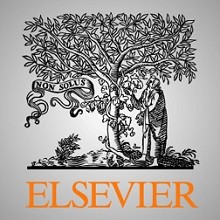
دانلود مقاله هوش مصنوعی برای اتوماسیون زنجیره تامین برق
چکیده
مقدمه
روش ها
اتوماسیون زنجیره تامین برق و هوش مصنوعی
چشم اندازهای اتوماسیون زنجیره تامین برق
نتیجه گیری
منابع
Abstract
Introduction
Methods
Electricity Supply Chain automation and Artificial Intelligence
Perspectives on the Electricity Supply Chain automation
Conclusion
References
چکیده
زنجیره تامین الکتریسیته سیستمی است که رویهها را قادر میسازد تا فرآیندهای مختلف از تولید تا حمل و نقل و مصرف برق را بهینه کند. نسبت منابع انرژی توزیع شده در سیستم برق به طور پیوسته افزایش می یابد، که نیاز به قابلیت نظارت بهبود یافته برای اطمینان از قابلیت اطمینان و کیفیت کلی زنجیره تامین برق دارد. اتوماسیون برای پردازش حجم فزاینده داده ها به شدت مورد نیاز است. بنابراین، رسیدگی به حجم زیادی از داده های ناهمگن و پردازش اطلاعات با استفاده از تکنیک های پیش بینی و بهینه سازی اجتناب ناپذیر است. تکنیکهای هوش مصنوعی برای گسترش تواناییهای شناختی انسان در این وظایف بسیار مهم هستند. در کار خود، ما تاثیرات اصلی پارادایم هوش مصنوعی را بر اتوماسیون زنجیره تامین برق ترکیب میکنیم. ما اتوماسیون در حال ظهور را از طریق هوش مصنوعی در هر لایه از مدل معماری شبکه هوشمند توصیف می کنیم و رویکردهای پیشرفته را برجسته می کنیم. در بررسی، ما بر روی عملکردهای زنجیره تامین برق زیر تمرکز می کنیم: تولید، نگهداری، پیش پردازش، تجزیه و تحلیل، پیش بینی، بهینه سازی و تجارت در سیستم های انرژی. پس از بررسی دیدگاه های فردی، اجرای بالقوه یک زنجیره تامین برق کاملاً خودکار را بررسی می کنیم. در نهایت، ما دیدگاهها و محدودیتهای تبدیل از زنجیرههای تامین برق معمولی به خودکار را مورد بحث قرار میدهیم، بهویژه از نظر تعامل انسانی، سازگاری با هوش مصنوعی، انتقال انرژی و پایداری.
توجه! این متن ترجمه ماشینی بوده و توسط مترجمین ای ترجمه، ترجمه نشده است.
Abstract
The Electricity Supply Chain is a system of enabling procedures to optimize processes ranging from production to transportation and consumption of electricity. The proportion of distributed energy sources within the electricity system increases steadily, which necessitates an improved monitoring capability to ensure the overall reliability and quality of the Electricity Supply Chain. Automation is strongly required to process the growing amount of data. Thus, it is inevitable to handle large amounts of heterogeneous data and process the information using forecasting and optimization techniques. Artificial Intelligence techniques are crucial for extending human cognitive abilities in these tasks. In our work, we synthesize the main impacts of the Artificial Intelligence paradigm on the automation of the Electricity Supply Chain. We describe the emerging automation through Artificial Intelligence in every layer of the Smart Grid Architecture Model and highlight state-of-the-art approaches. In the review, we focus on the following Electricity Supply Chain functionalities: generation, maintenance, pre-processing, analysis, forecasting, optimization, and trading within energy systems. After investigating the individual perspectives, we examine the potential implementation of a fully automated Electricity Supply Chain. Lastly, we discuss perspectives and limitations for the transformation from conventional to automated Electricity Supply Chains, specifically in terms of human interaction, Artificial Intelligence adaptation, energy transition, and sustainability.
Introduction
The increasing number of local energy sources connected to the utility grid, such as individual photovoltaic (PV) systems, necessitates automated control to ensure a reliable and efficient electricity supply. The digitalization of the Electricity Supply Chain (ESC) is being accelerated to provide infrastructure supporting control automation in terms of collection, communication, and treatment of information for the increasing number of energy agents like prosumers. Based on the Smart Grid Architecture Model (SGAM) [1], ESC includes the following domains of electricity: generation incl. Distributed Energy Resources (DER), consumption, transmission and distribution as well as its trading. Each of these domains has become more complex through digitization, resulting in a growing demand to support grid operators and electricity traders. This requirement can be accomplished by automating information treatment and associated decision-making processes, which particularly rely on Artificial Intelligence (AI) techniques.
Conclusion
In our work, we thoroughly investigated the newest state-of-the-art research on the automation of the ESC. Due to the rising volatility in electricity production, more and more researchers account for the complexity by proposing new AI methods on every level of the ESC. We assert and assess both new and established methods and aggregate the most promising candidates. Following the SGAM, we categorize the AI methods on individual levels of the supply chain, offering a distinctive analysis depending on their field of application. Interestingly, we found that ML methods are not only employed for forecasting and optimization tasks but instead play a vital role in data processing and anomaly detection as well. In this regard, implementations of AI are used to secure control of highly hazardous or volatile energy sources as well as security environment levels, especially on the communication and information layer of the SGAM layout. Nevertheless, we also assert that the deployment of AI methods has to be considered under the viewpoint of resilience, to ensure a reliable energy system. The main result of this paper is the proposition of a fully automated ESC and enabling developments for implementation. Even though AI is still often developed for the individual layers of the ESC, we elaborate that the integration to a fully automated ESC might be within reach in the coming years due to the developments in XAI, RL, knowledge-based AI and data-driven AutoML. With a self-learning workflow, it is possible to optimize data processing from generation to forecasting and to use it for management and trading decisions. However, there remain challenges in terms of data quantity needed, computational performance, resilience, algorithm robustness, human interaction as well as standardization that need to be solved to ensure a fully automated ESC based on AI.
